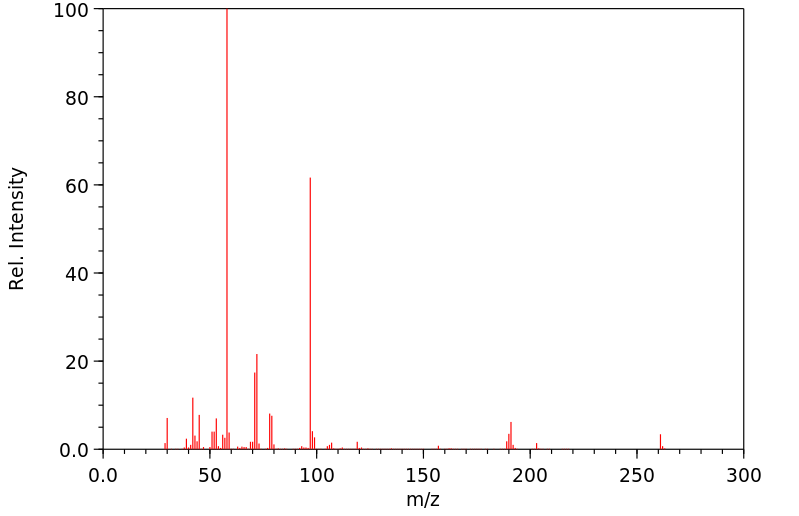代谢
甲吡咯啉的代谢在活体大鼠中通过气相色谱和气相色谱-质谱分析尿液提取物进行了研究。给动物注射四氘标记的甲吡咯啉有助于识别尿液中甲吡咯啉的7种不同代谢物,包括通过与合成参照标准比较确定的(5-羟基吡啶基)-甲吡咯啉。在甲吡咯啉治疗4周后,大鼠还会排泄出可检测量的3-和(6-羟基吡啶基)-甲吡咯啉代谢物,这表明甲吡咯啉预处理改变了吡啶环的代谢。2-噻吩基甲基团的代谢移除也很容易,因为在大剂量下,N'-(2-吡啶基)-N,N-二甲基乙撑二胺及其代谢物N'-(2'(5-羟基吡啶基))-N,N-二甲基乙撑二胺会被排泄。尽管持续给药,尿液中药物甲吡咯啉及其代谢物的浓度随时间下降,这表明在重复给药时甲吡咯啉的吸收、代谢和/或排泄发生了变化。
The metabolism of methapyrilene, was examined in vivo by glc and glc-mass spectrometric analysis of rat urinary extracts. Dosing the animals with tetradeuterium labeled methapyrilene helped identify 7 different metabolites of methapyrilene in the urine, including (5-hydroxylpyridyl)-methapyrilene, which was identified by comparison with a synthetic reference standard. After 4 weeks of treatment with methapyrilene, rats also excrete detectable amounts of the 3- and (6-hydroxylpyridyl)-methapyrilene metabolites suggesting that pretreatment with methapyrilene alters the metabolism of the pyridine ring. Metabolic removal of the 2-thienylmethylene moiety is also facile, as large amounts of N'-(2-pyridyl)-N,N-dimethylethylenediamine and its metabolite N'-(2(5-hydroxylpyridyl))-N,N-dimethylethylenediamine are excreted under all dosing regimens. Urinary concn of both methapyrilene and metabolites decline with time, despite continuous dosing, indicating a change in absorption, metabolism, and/or excretion of methapyrilene on repeated dosing.
来源:Hazardous Substances Data Bank (HSDB)







